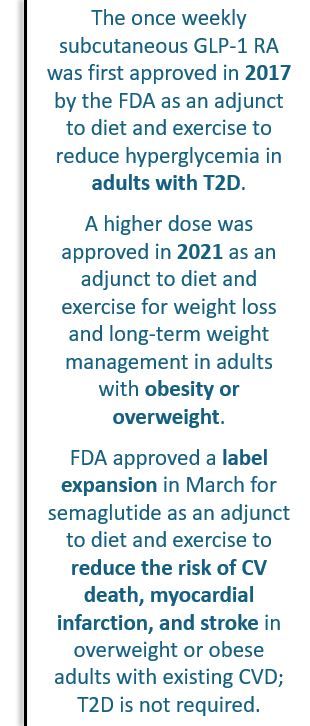More than Half of US Adults May Be Eligible for Semaglutide Therapy, Accordng to New Estimates
Millions of US adults could benefit from semaglutide treatment for diabetes, obesity, and/or CV disease but insurance isn't guaranteed and the drug is costly.
Dhruv Kazi, MD, MSc, MS

More than half of the US adult population, approximately 137 million people, are eligible for treatment with semaglutide, according to findings published online November 18 in JAMA Cardiology.1 The number surpasses that of American adults eligible for statin drugs (approximately 82 million), widely recognized as the most prescribed pharmaceuticals in the country,2 according to Dhruv Kazi, MD, MSc, MS, and colleagues.
Kazi is director of the cardiac critical care unit at Beth Israel Deaconess Medical Center in Boston, and section head of health economics and associate director of the Smith Center for Outcomes Research in Cardiology.
Kazi and team, whose members represent the country's leading medical schools and public health research institutions, point out that the majority of the 137 million are eligible for the glucagon-like peptide-1 (GLP-1) receptor agonist (GLP-1RA) based on the antiobesity indication for semaglutide, but they estimate that more than 39 million adults qualify for indications other than obesity management alone.1 That number is more than double the estimated 15 million who currently are prescribed a GLP-1RA.3

According to Kazi et al, adults who are eligible for semaglutide for secondary prevention of cardiovascular disease (CVD), an indication approved by the FDA in March, would have already qualified based on criteria in the antiobesity labeling. CVD prevention is covered at higher rates by insurance companies than weight management, however, leading the researchers to estimate that 4.3 million adults with CVD but without type 2 diabetes (T2D) may be eligible for coverage of semaglutide when prescribed for that purpose.1
The authors cite sources that place semaglutide as the top selling drug in the US in 2023 with net sales of $13.8 billion.
By quantifying the number of adults now eligible for semaglutide therapy, Kazi and colleagues hope to augment guidance for policymaking and "clarify potential implications for pharmaceutical spending."1
The research team based its analysis on data from the National Health and Nutrition Examination Survey from 2015 to early 2020 for adults judged eligible for semaglutide therapy (based on inclusion/exclusion criteria from pivotal randomized clinical trials) across 3 indications1:
- Diabetes (self-report of diabetes diagnosis, HbA1c ≥7.0%, or preexisting use of diabetes therapies)
- Weight management (obesity, BMI 30 kg/m2 or greater or overweight, BMI 27 kg/m2 or greater with one weight-related comorbidity)
- Secondary CVD prevention (aged 45 or older, BMI 27 kg/m2 or greater, history of MI or stroke)
The authors calculated that 8,504 adults, representing 136.8 million people population-wide, were eligible based on meeting criteria for at least 1 indication. The number of men and women eligible was essentially equal and the mean age was 50.7 years, according to the study. By indication, the research team estimated eligible adults as follows1:
- Weight management: 129.2 million
- Diabetes management: 35 million
- Secondary CVD prevention: 8.9 million
When they evaluated insurance coverage, the authors calculated the 136.8 million eligible adults included 26.8 million insured by Medicare, 13.8 million by Medicaid, and 6.1 million with private insurance carriers, for a total of 46.7 million adults with some ability to defray the monthly cost of semaglutide, which averages about $1000.1 That means that roughly 90 million who are eligible for semaglutide may not be able to afford the drug for any indication.
The magnitude of the population that could benefit from semaglutide therapy "highlights its potential impact on pharmaceutical spending and population health," Kazi and colleagues wrote. Further, "Since more than half of US adults who have taken GLP-1 receptor agonists state the therapy was difficult to afford, interventions to reduce economic barriers to access are urgently needed."
They call for coupling efforts to increase equitable access with strategies that align the cost of semaglutide with its pluripotent health benefits.
The authors note the team could not accurately identify some of the rare contraindications to semaglutide because data were not available but do not believe this has "substantially biased" their estimates.